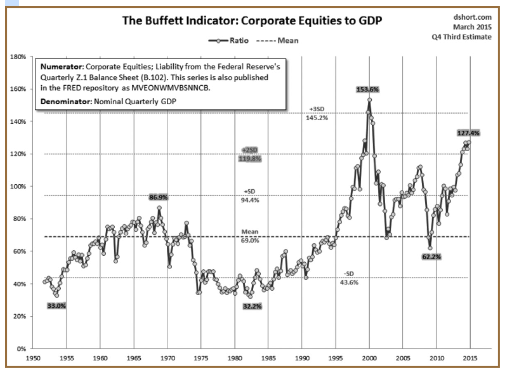Too Many Eggs In Two Baskets: Why Canadian Investors Should Look South
Don’t put all your eggs in one basket”. It’s a good piece of wisdom for life, but particularly so when it comes to investing. The same warning applies to putting all your eggs in two baskets. Diversification means the spreading of risk, and that
equates to protection from any one shock.
Unless you are a professional investor with expertise about specific sectors, overly concentrating your portfolio can do wonders of the unpleasant variety to your finances. In the extreme case, imagine someone who mainly owned internet stocks at their peak in 2000. Many people thought those stocks were sure bets for the future. And then most of them crashed and burned.
At this point you may be wondering, but if I own all 300 stocks in the benchmark TSX, surely I’m adequately diversified, right? Wrong.
The Toronto Stock Exchange, home to the bulk of many Canadians’ investments and retirement savings, is one of the most un-diversified markets in the world.
Three sectors, energy, materials, and financial services, account for a staggering 76% of the TSX.
Energy and materials are both part of the larger commodities industry, so in reality three-quarters of the stock market rests on two areas of the economy.
In recent memory, this concentration, while risky, has paid off handsomely.
Over the past decade, if you mostly owned shares in financial services and resource companies, you did very well. Canadian financial services companies have been stellar-outperformers, especially compared to global peers. And commodity prices have had a historic run, taking related stocks with them.
But there are compelling reasons to think that the good times are coming to an end for both sectors.
In the case of financial services, the bulk of which are banks, the sector has benefitted enormously from strong housing markets and ever-rising consumer credit. In addition, the federal government has handed the banks something of a free lunch via mortgage insurance, so in the event that borrowers default, it’s the taxpayer largely on the hook.
At this point, though, Canadians look as indebted, if not more, than Americans did just before their credit bubble burst and caused a massive financial crisis.
And while it’s true that the mortgages are often insured by the federal government, that doesn’t mean the banks will escape unscathed if house prices crash. Other sectors of the economy will suffer, and that means more personal and corporate insolvency that eventually takes its toll on lenders.
Commodities also pose significant risks at this stage. The consensus, largely Wall Street-driven, is that resource prices are high because of growth in the so-called
BRIC countries-Brazil, Russia, India and China. These emerging market nations are thought to be growing and industrializing fast enough to put the squeeze on many natural resource markets.
There are two basic problems with this theory for investors. First, even if we accept that the BRICs are the engine of commodity prices, these countries are clearly slowing. India’s growth is the slowest in years and even according to the dubious official figures, China is no longer growing like it did. Brazil has also slowed sharply. Russia, dependent on expensive oil for its growth, will suffer when energy prices decline.
My sense though, is that the BRICs are a nice excuse for something far less palatable: namely, the real reason commodity prices have soared in recent years is because investors and speculators have overwhelmed these markets. Everywhere you look, there’s a new exchange trade fund based either on commodity futures or even physical commodities. And this is just the retail investor getting in on the action. Hedge funds and large investment banks
also make significant bets on commodity prices, which can sometimes become a self-fulfilling prophecy.
All in all, it looks like commodities are just the latest in a string of financial bubbles destined to burst. So you probably don’t want to own too many resource stocks at
this stage.
What, then, is a Canadian investor to do? One answer is to look south. Compared to the TSX, the S & P 500 is wonderfully diversified. There isn’t one industry, nor even two, that comes close to dominating the index as in Canada. This provides a great cushion for investors. You don’t have to worry about one thing going wrong,
thereby flattening your portfolio in the process.
You also get many strong global brands, such as Procter and Gamble and Johnson and Johnson, making products we use every day. Even if you’d rather not buy the whole index, there are solid companies with decent dividends from which to choose.
There’s one added benefit to looking to the U.S. at the moment: currency diversification. For over a decade, the Canadian dollar has outperformed its
American counterpart. This has meant that Canadian investors have suffered a currency loss if they owned U.S. stocks, which are naturally priced in U.S. dollars.
Our currency has benefitted from strong resource prices, a resilient housing market, and huge foreign inflows into Canadian securities.
market, and huge foreign inflows into Canadian securities.
I believe these trends are about to reverse, sending the Canadian dollar lower. As I mentioned earlier, resource prices should fall. And when housing prices seriously correct, our economy will weaken substantially. When that happens, the idea of a rate hike by the Bank of Canada will disappear from the table.
The combination of weak commodities and weak housing should send the loonie sharply lower. Before that happens, the intelligent move is to buy quality U.S.
stocks that pay dividends. Even if the U.S. stock market declines, a lower Canadian dollar will act as a hedge.
So in conclusion, be wary of too many eggs in a couple Canadian baskets, and diversify accordingly.

